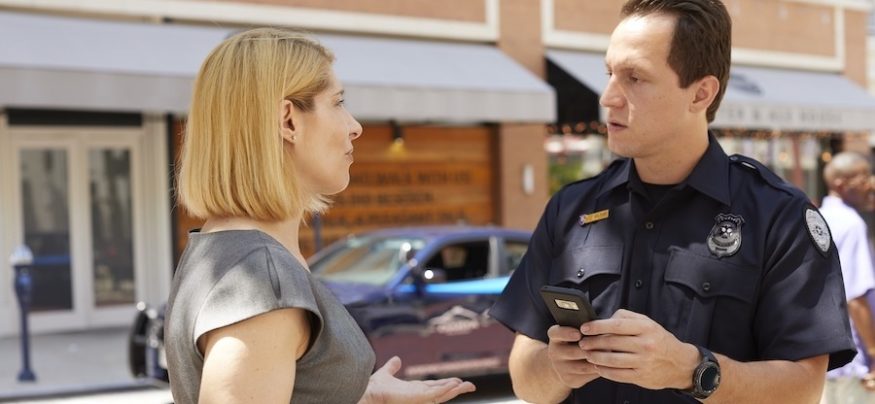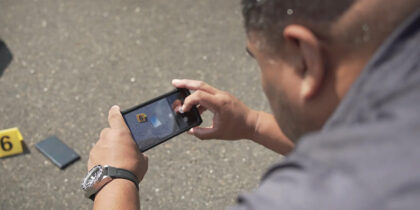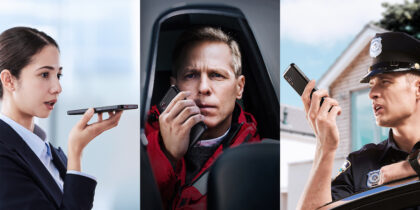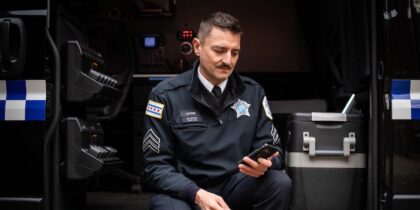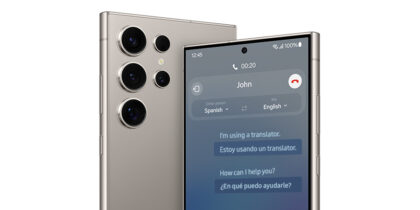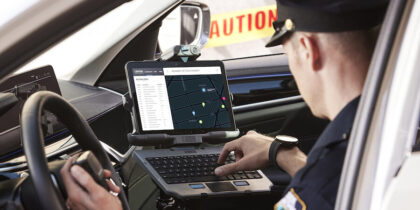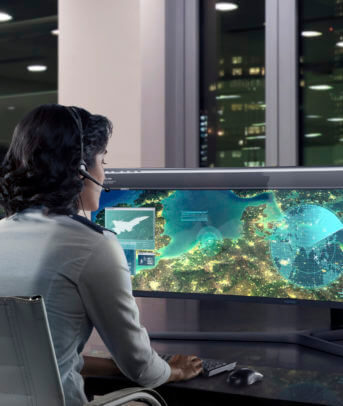Smartphones have become a crucial tool in law enforcement, delivering a level of functionality and usefulness that have made them the proverbial Swiss Army knife for officers. Recognizing the sheer utility that smartphones provide, many agencies now issue devices to their personnel, or have some type of stipend program to incentivize officers to use their own phone (often referred to as Bring Your Own Device or BYOD). Even officers who don’t get departmental support frequently find that their personal smartphone can help them be more effective in the field.
Regardless of the source of funding or ownership, a smartphone in the hands of a law enforcement officer can save time and provide access to information and functionality that goes well beyond what the conventional in-vehicle computer can accomplish.
In-Field Capabilities
Officers should review their general work practices and responsibilities and look for opportunities to leverage their smartphones in ways that will improve efficiency.
For example, a follow-up call with a witness rather than an in-person discussion can save time spent on the road. If an in-person interview is necessary, calling ahead and ensuring that the person will be available can prove worthwhile. And, you may also want to consider letting the person know what types of information or documents will be needed so they’re on hand when you arrive.
Rather than going through dispatch to check with a wayward juvenile’s parents, make the call yourself and decrease the chance of miscommunication. This is particularly valuable in after-hours situations when you need a parent to come to the scene, because you can give them specific and relevant information. Tip: If you’re trying to reach someone at their mobile number, remember that people are increasingly reluctant to answer a call from a number they don’t recognize due to experiences with robocalls. You can often overcome this by sending a text and telling them the purpose of the call and your position.
Calling ahead with a smartphone to check bed availability at a homeless shelter or mental health facility is much more effective than relaying the information through dispatch. If you’re dealing with someone who is on probation or parole, contacting the supervising agent can result in getting authorization for a search or requiring the contacted subject to report in for drug screening. Time and again, it’s clear that simply having access to the core communications functionality of a smartphone can be invaluable to officers in the field.
Beyond Calls and Texts
Additional utility can be gained by using the wide array of built-in smartphone features, accessing online resources or leveraging readily-available applications. Suffice to say, the potential is great. Here’s a partial list of what’s already available today:
- Camera for capturing informational or evidentiary images and videos
- Audio recorder for dictating notes or recording witness interviews
- Computer-aided dispatch (CAD) access (if agency system supports mobile)
- Language translation using text or speech
- Geolocation at the officer level (improves safety during rapidly evolving incidents)
- Electronic citation issuance
- Email access
- Scanning of documents using either bar codes or optical character recognition
- Ready access to departmental policies, training information or wanted bulletins
- Management and review of body-worn camera video
- Facial recognition
- Pill identification
- Improved situational awareness
- Push-to-talk communication
- Officer wellness
In addition, the Android platform is quickly proving that it’s the ideal foundation on which to build new capabilities. The fact that the smartphone can provide power (via the USB port) to compact peripherals that perform specialized functions means that we will continue to see new capabilities like thermal imaging and in-field fingerprint identification.
Application Availability and Considerations
With more than 2.6 million apps available in the Google Play Store, finding the right ones for your specific use or applicable for your jurisdiction can be daunting. Search with keywords that are relevant to your situation (e.g., your state + law enforcement + legal resource). Consider also contacting your state attorney general’s office, county legal advisor or major labor organization and inquire about apps they’ve created or would recommend.
Leveraging Smartphones in Law Enforcement
Discover what officers need to know about using their smartphones in the field. Download Now
An example of an app under development that could provide significant benefit to first responders is QuickRoute, which is a project of the Department of Homeland Security and will provide routing for emergency response based on weather, road conditions and vehicle characteristics. Two free applications that will be of interest to most law enforcement officers are those provided by PoliceOne and the OfficerDown Memorial Page.
When installing or accessing applications, officers should ensure they are in compliance with their department’s acceptable use policy for mobile devices.
Best Practices for Device Security
Officers who are using their own phones for work purposes should take appropriate steps to ensure security for the device. Follow this protocol:
- Use a screen lock to open the device. A biometric, such as a fingerprint, can be quick and highly secure.
- Require use of a biometric or complex password for accessing any sensitive applications or data stored on the device.
- If dealing with CJIS-related material, ensure you have a two-factor authentication capability that complies with CJIS requirements.
- Do not compromise your security by sharing passwords or using short, easily determined passwords.
The Power of DeX: Smartphones as the In-Vehicle Computer
An officer who is using department-issued smartphones from Samsung should recommend their organization look into the Samsung DeX platform, which allows the latest Galaxy smartphones to power a desktop computing experience, essentially replicating an in-vehicle computer by using a dedicated display and keyboard. DeX optimizes mobile applications to make full use of the larger display, rather than simply stretching the smartphone interface. This makes it easier to complete paperwork, such as incident reports, suspect identification or crime scene review. The increased efficiency provided by DeX is a compelling factor for an agency considering a smartphone deployment.
A Department-Wide Program: One Agency’s Experience
Deputies at the Hillsdale County, Michigan Sheriff’s Office believed that smartphones would help them in the field, and their request for mobile devices became a priority for Sheriff Tim Parker when he took office in 2017. By working with FirstNet and Samsung, the department was able to issue smartphones and wearables to all deputies. As a result, deputies are now doing follow-up calls from the field rather than driving back to the office and they’re using smartwatches to check a deputy’s status when they’re in areas that lack radio coverage. Deputies also use a notification app that alerts them when a subject is released from jail. The Hillsdale Sheriff’s Office story demonstrates the tangible benefits that a smartphone program can provide, and may provide guidance for officers wishing to recommend a department-wide smartphone program.
Going Mobile-First
Today’s smartphones are powerful computers that can support field operations, and they provide impressive utility. Beyond the basic — but extremely valuable — communication capabilities, smartphones support mission-specific applications, as well as useful internet-based tools like language translation and pill identification. Combined with new peripheral technologies, smartphones offer advanced capabilities that were previously only available with costly, single-purpose devices.
Learn more about the enhanced connectivity that FirstNet is bringing to officers, or get more information about how agencies can save on operational costs by going mobile-first.
